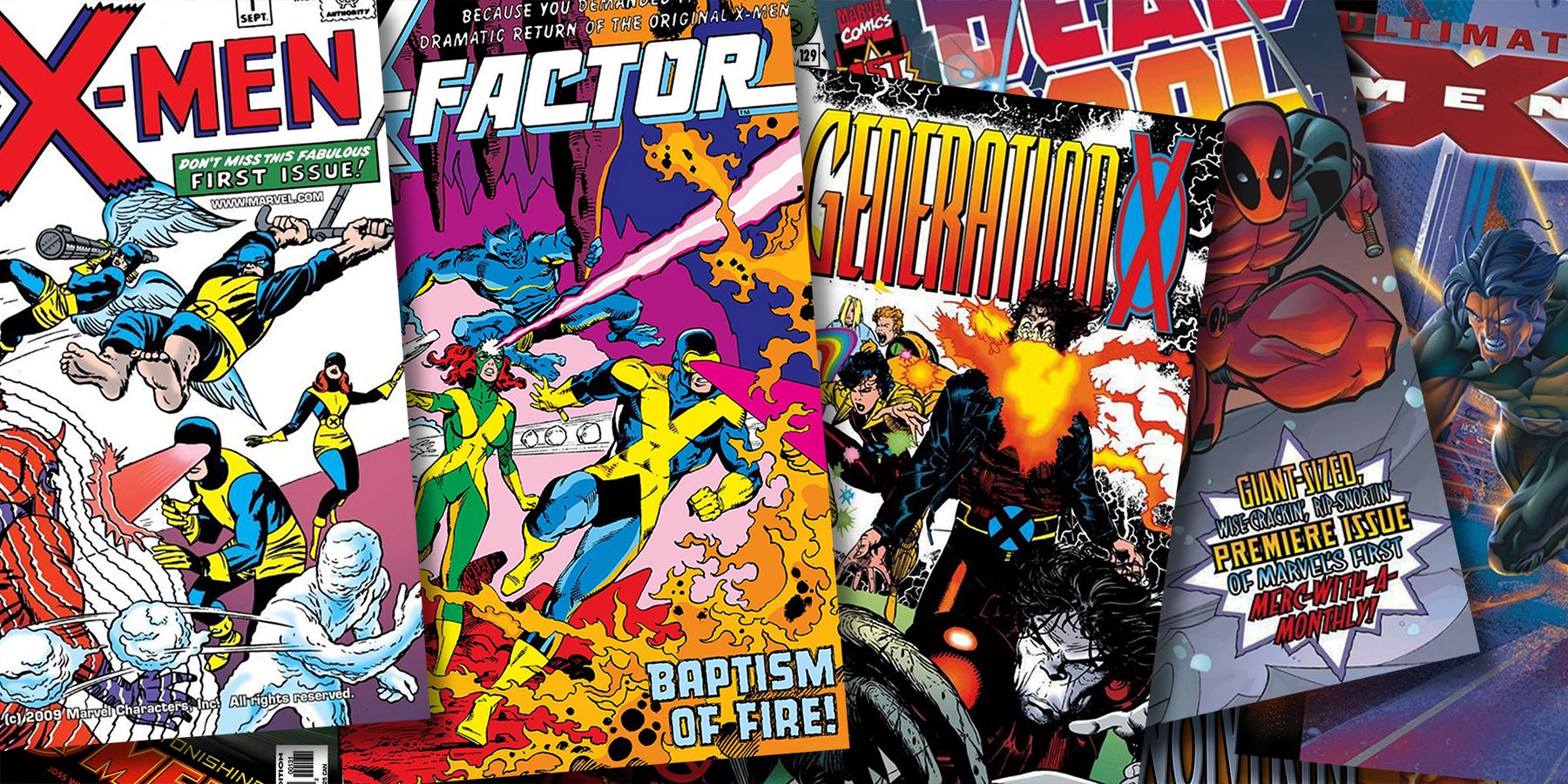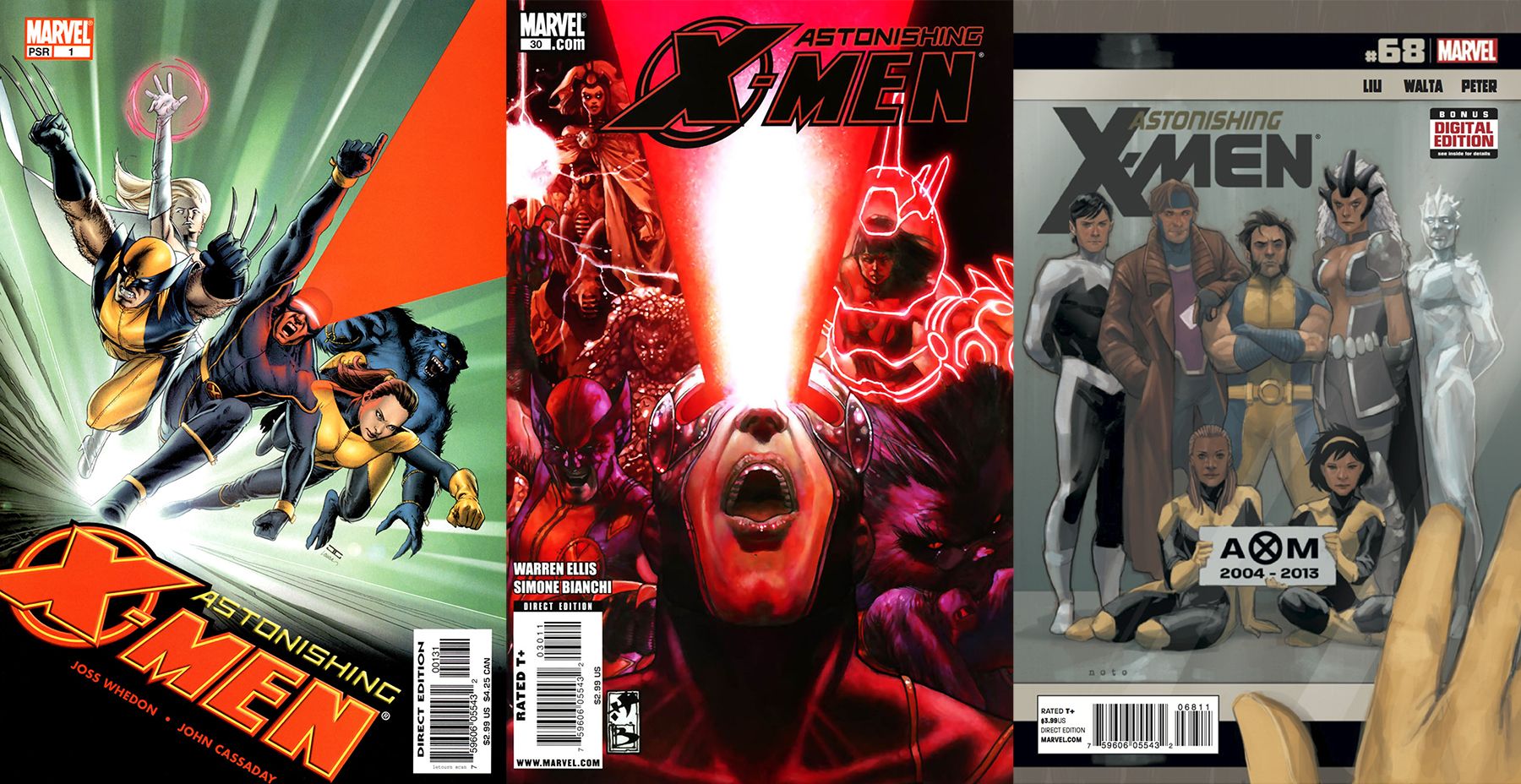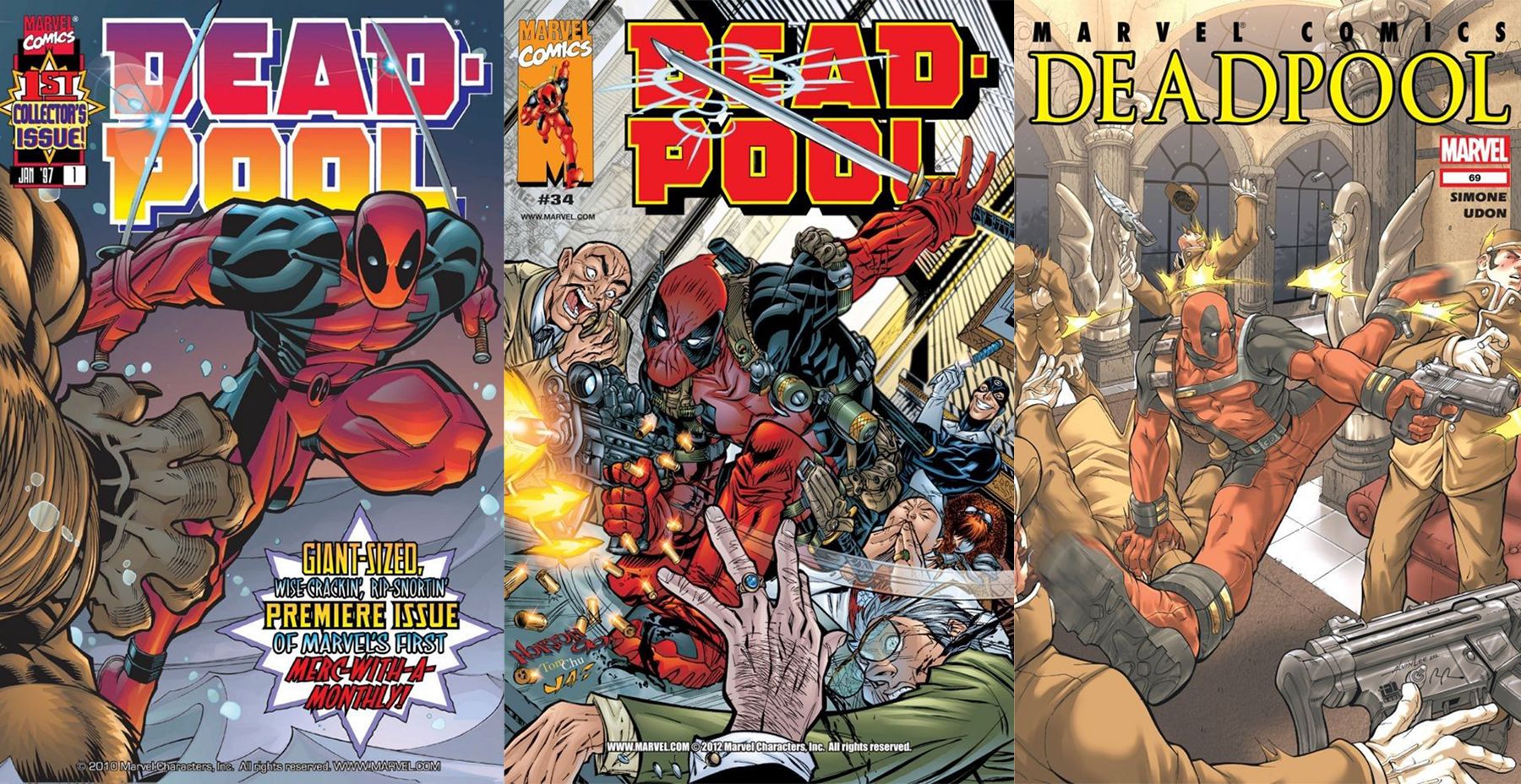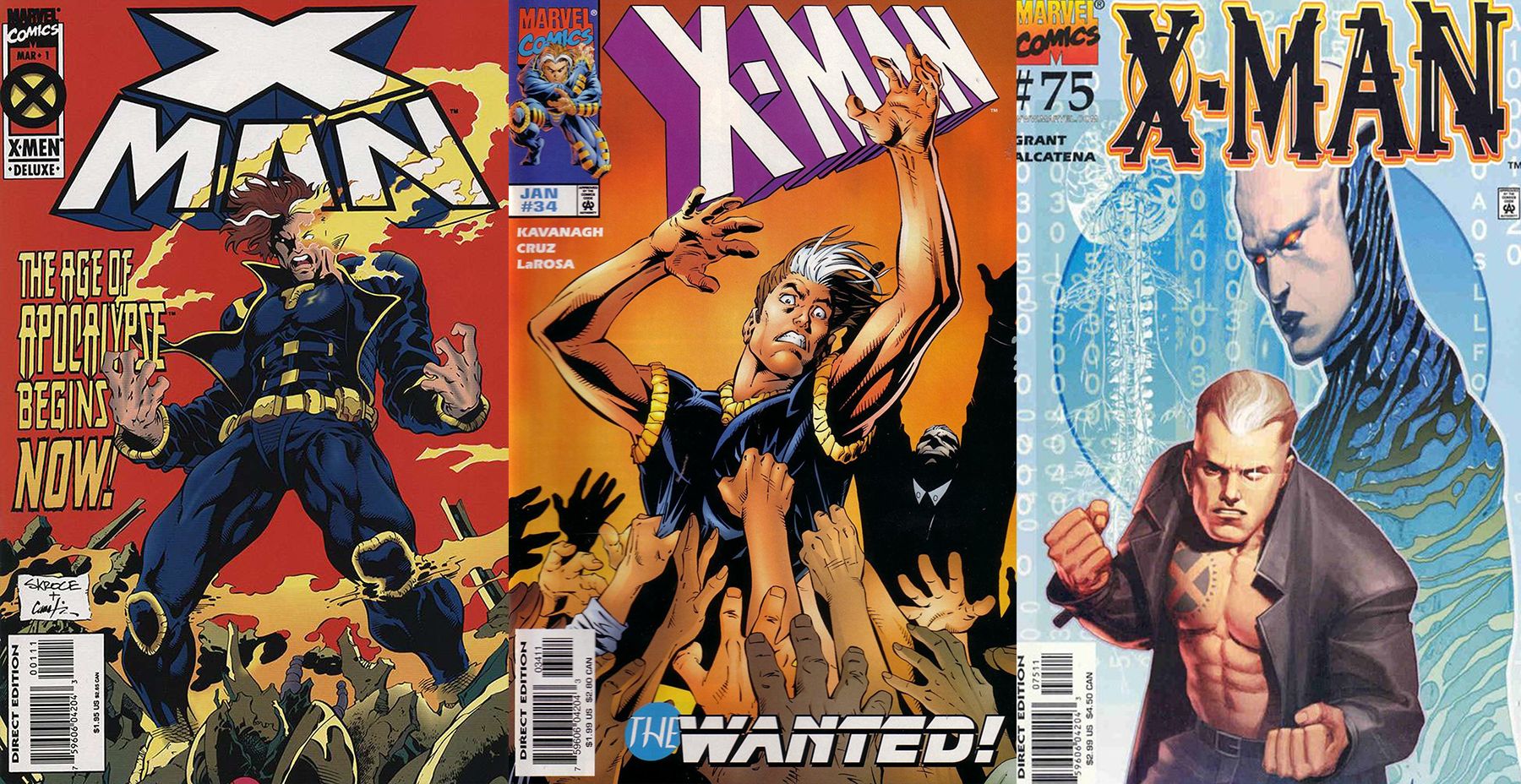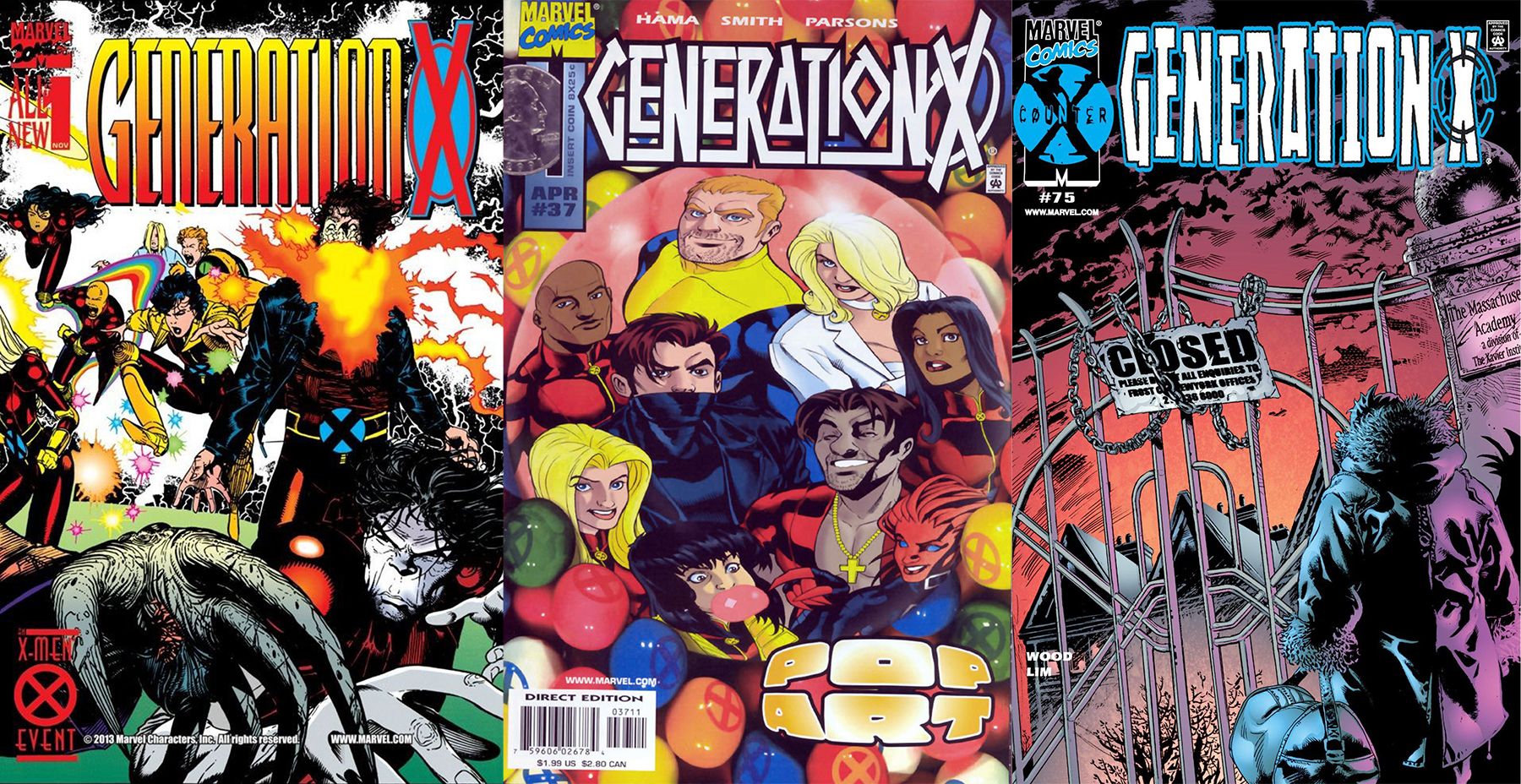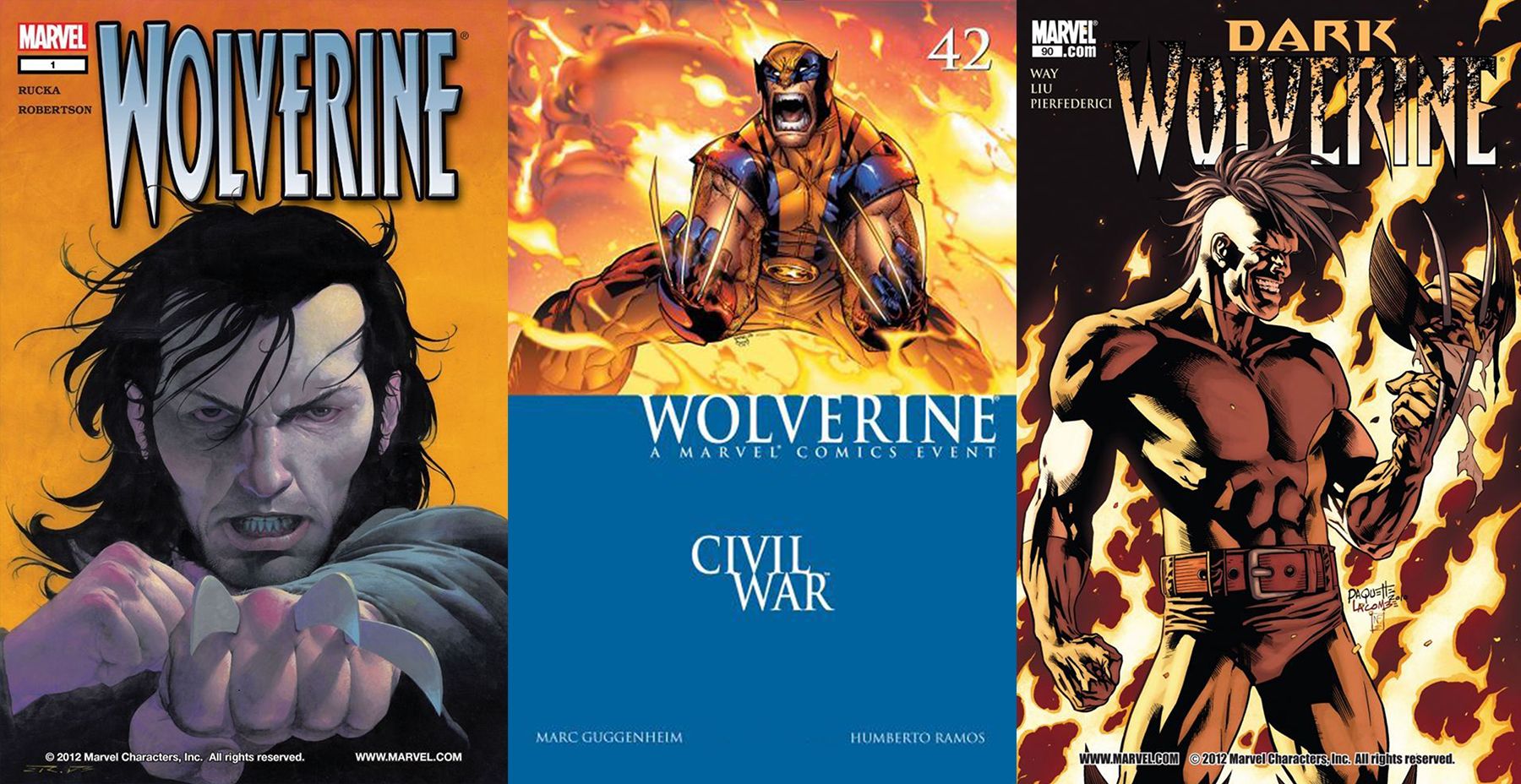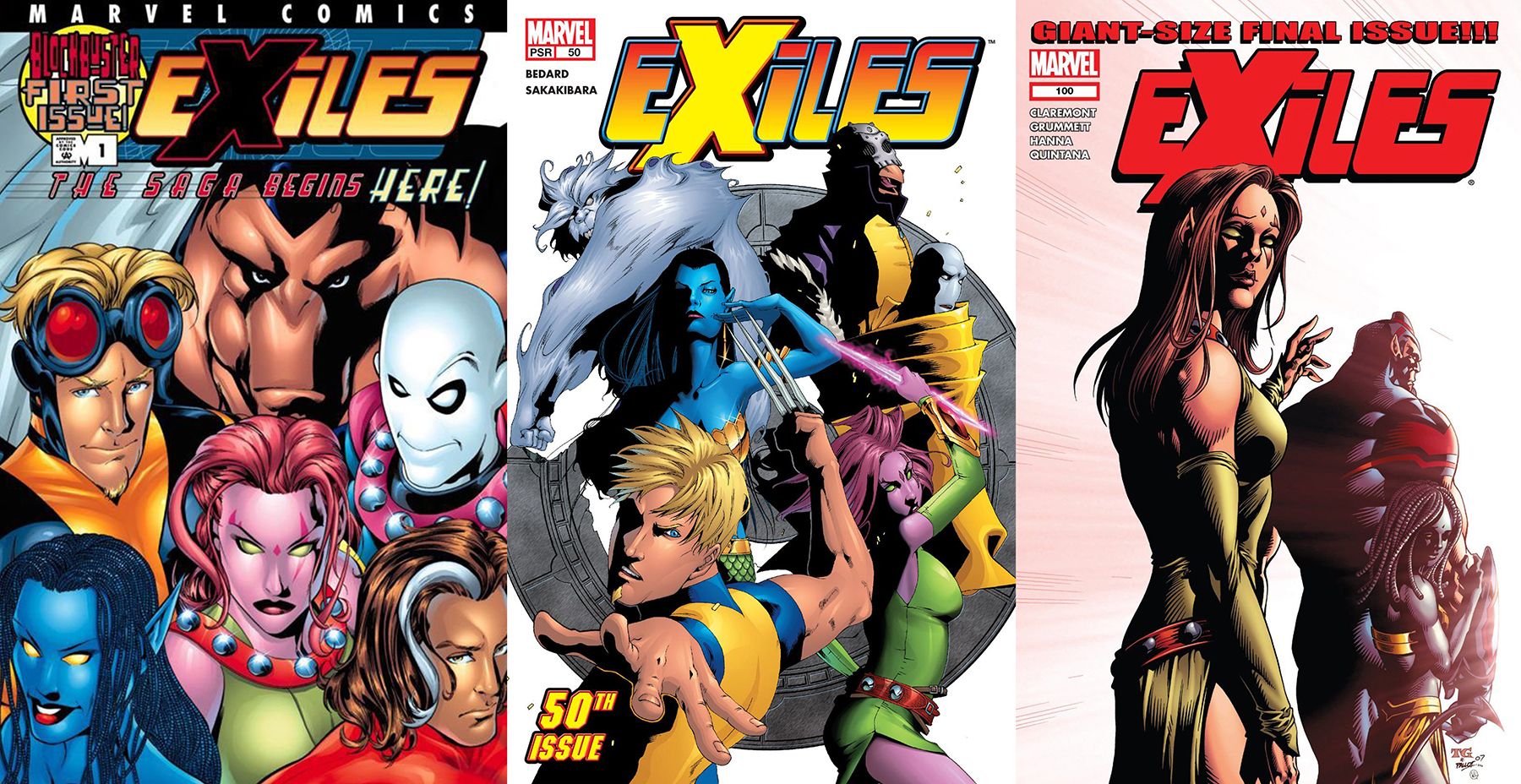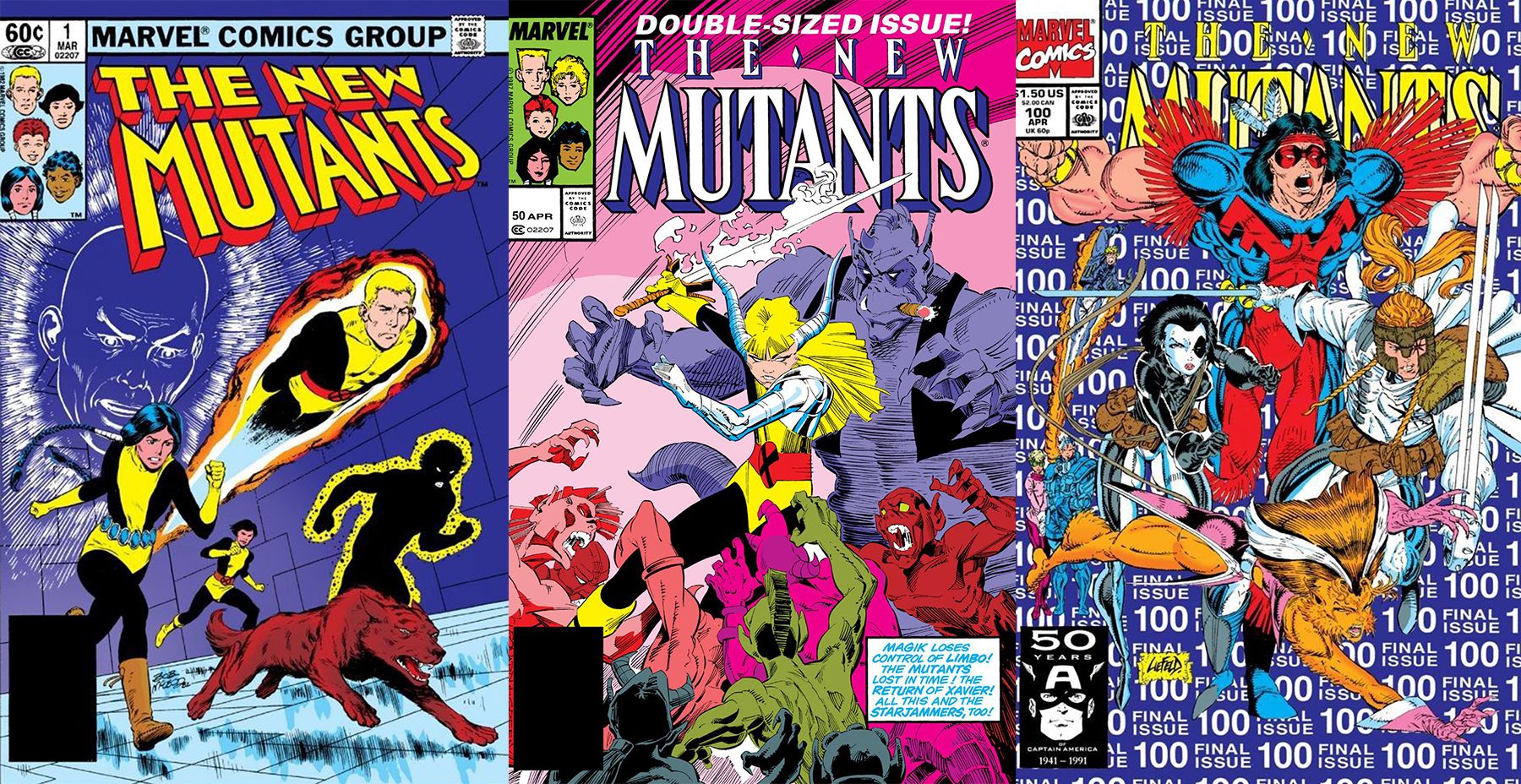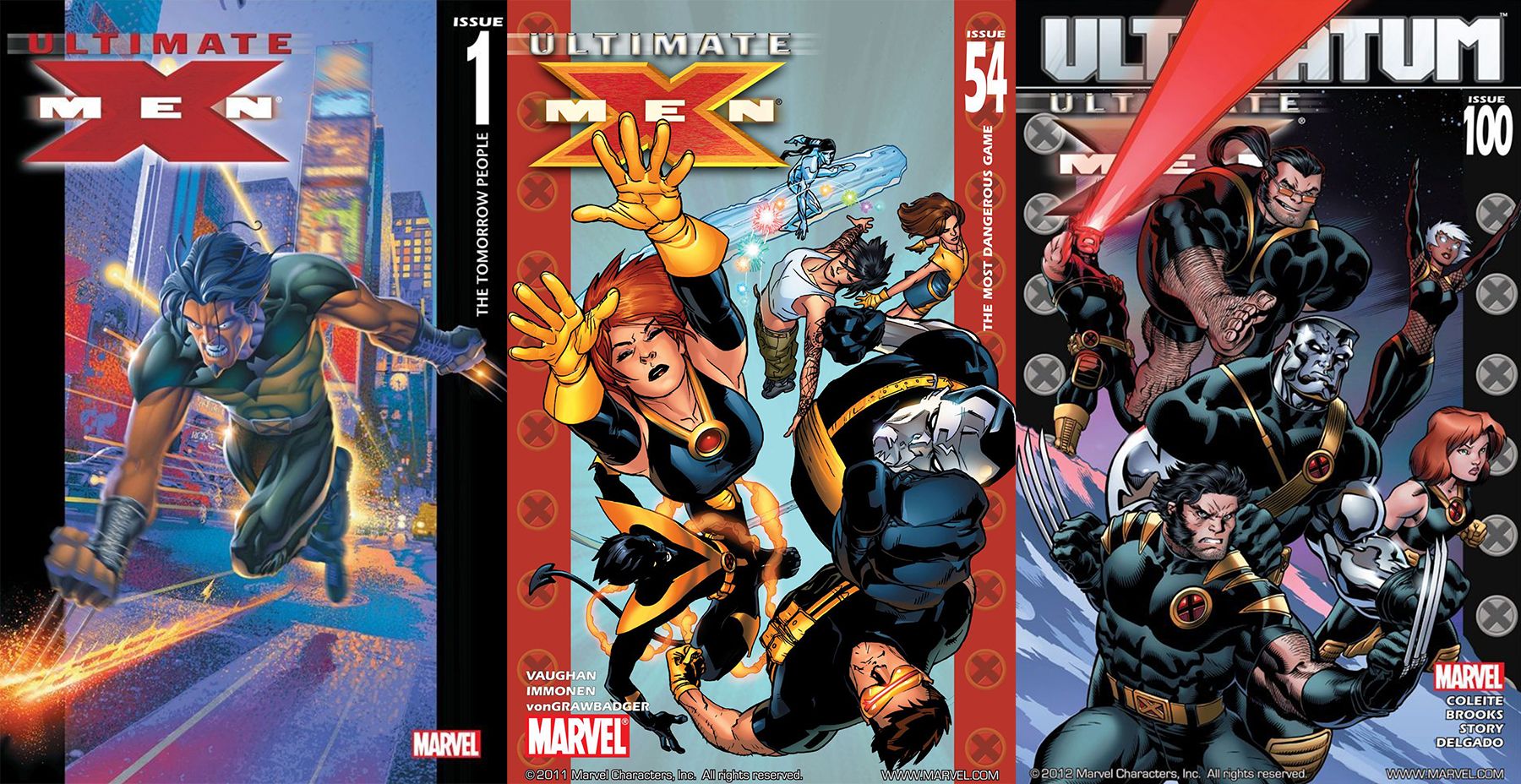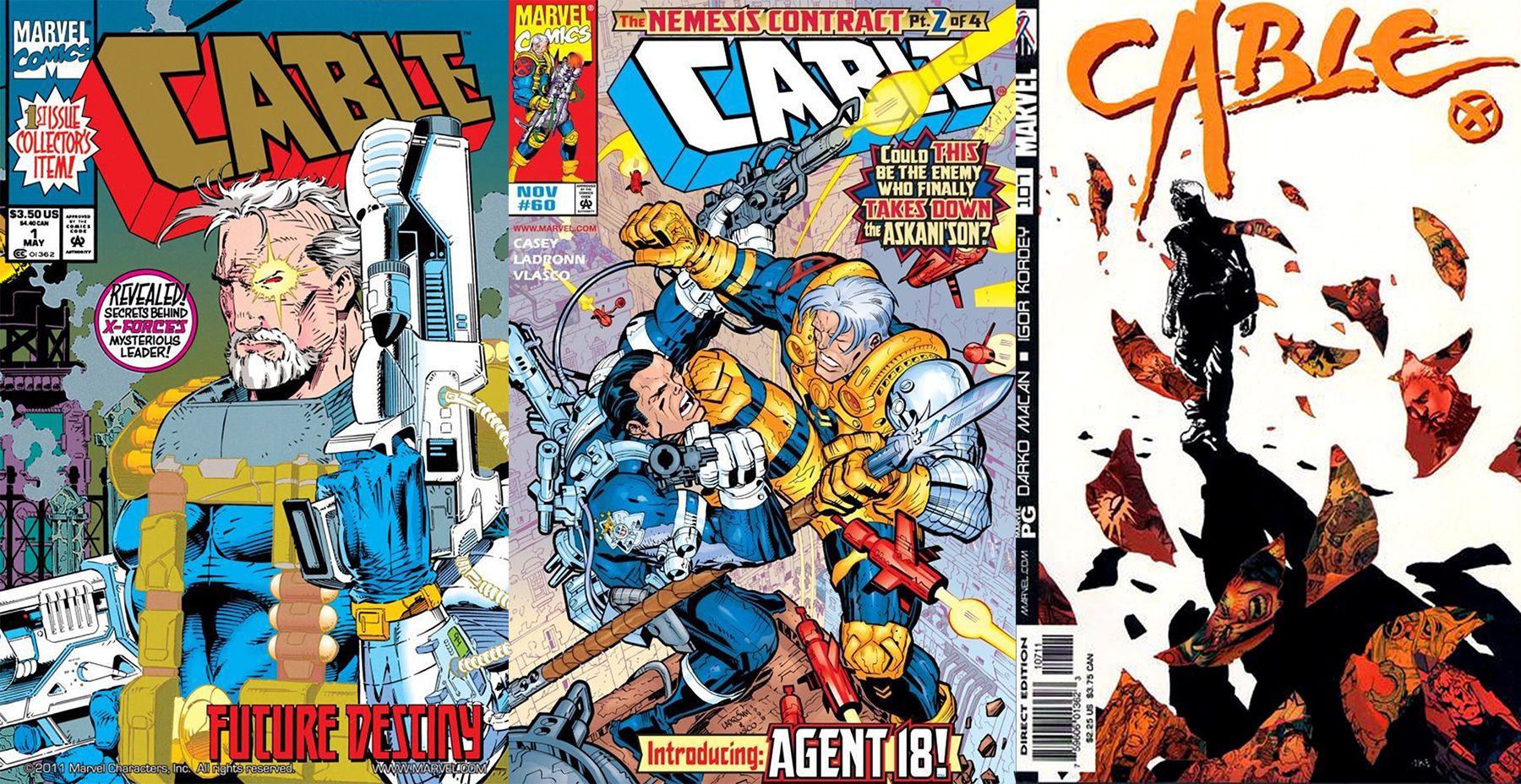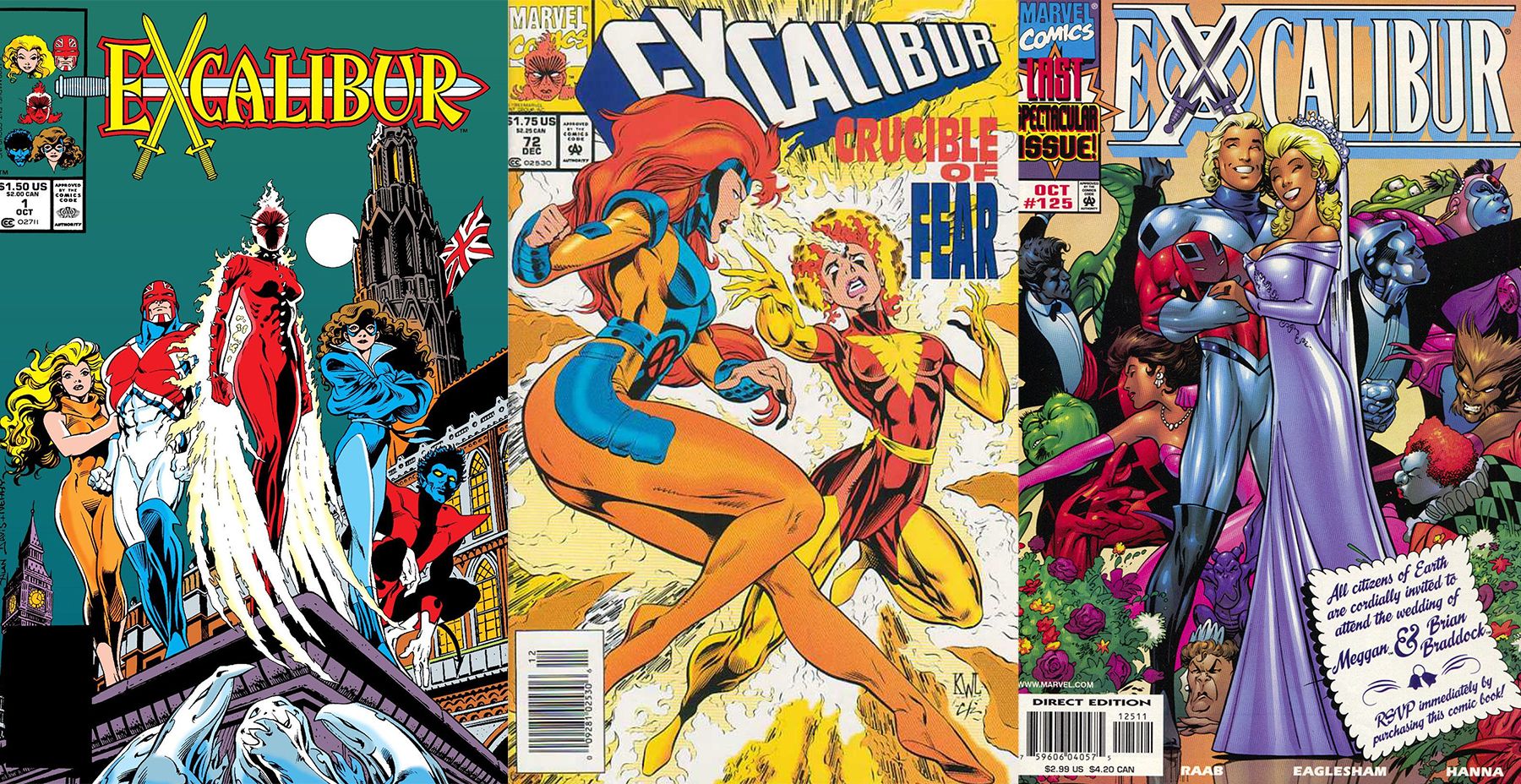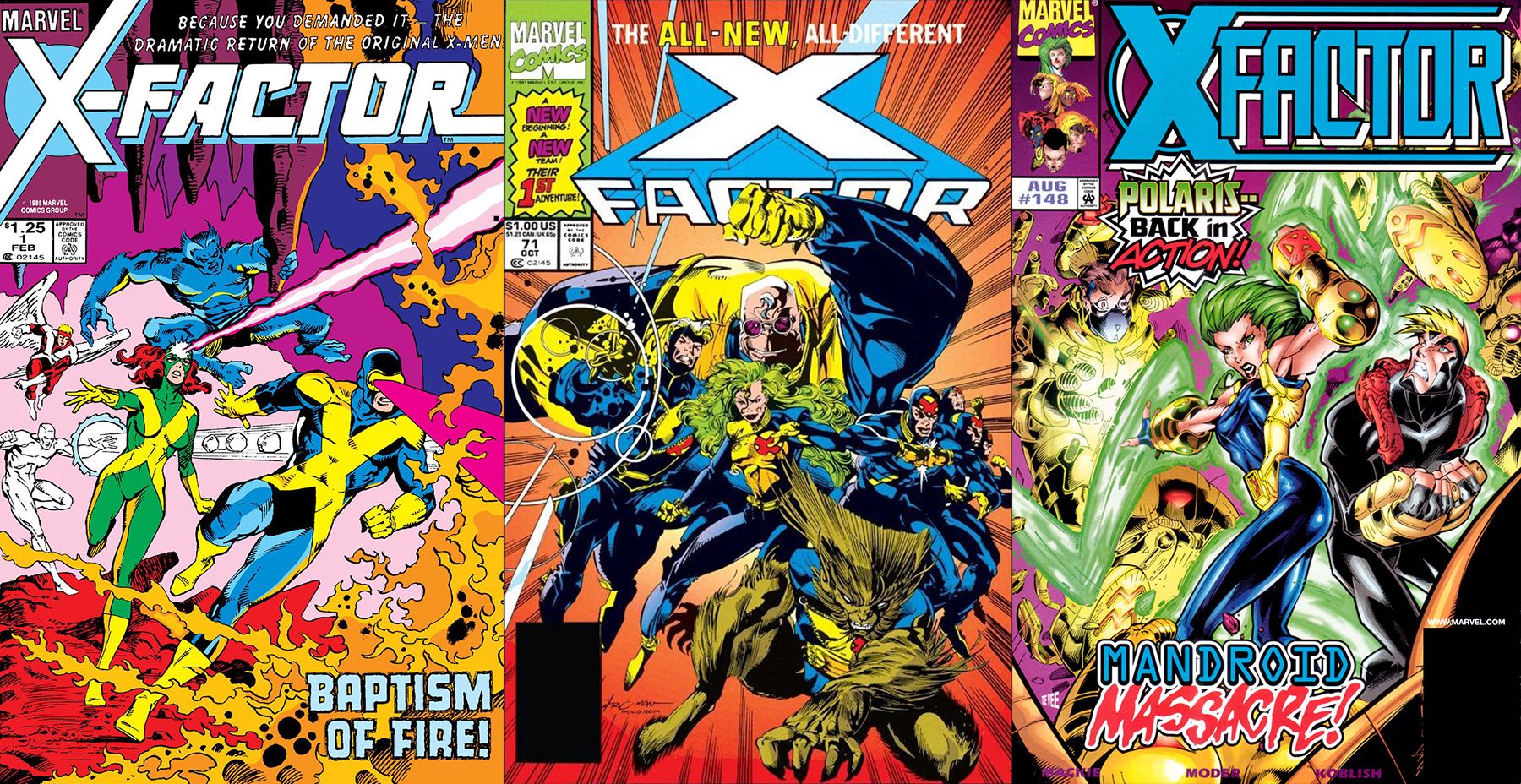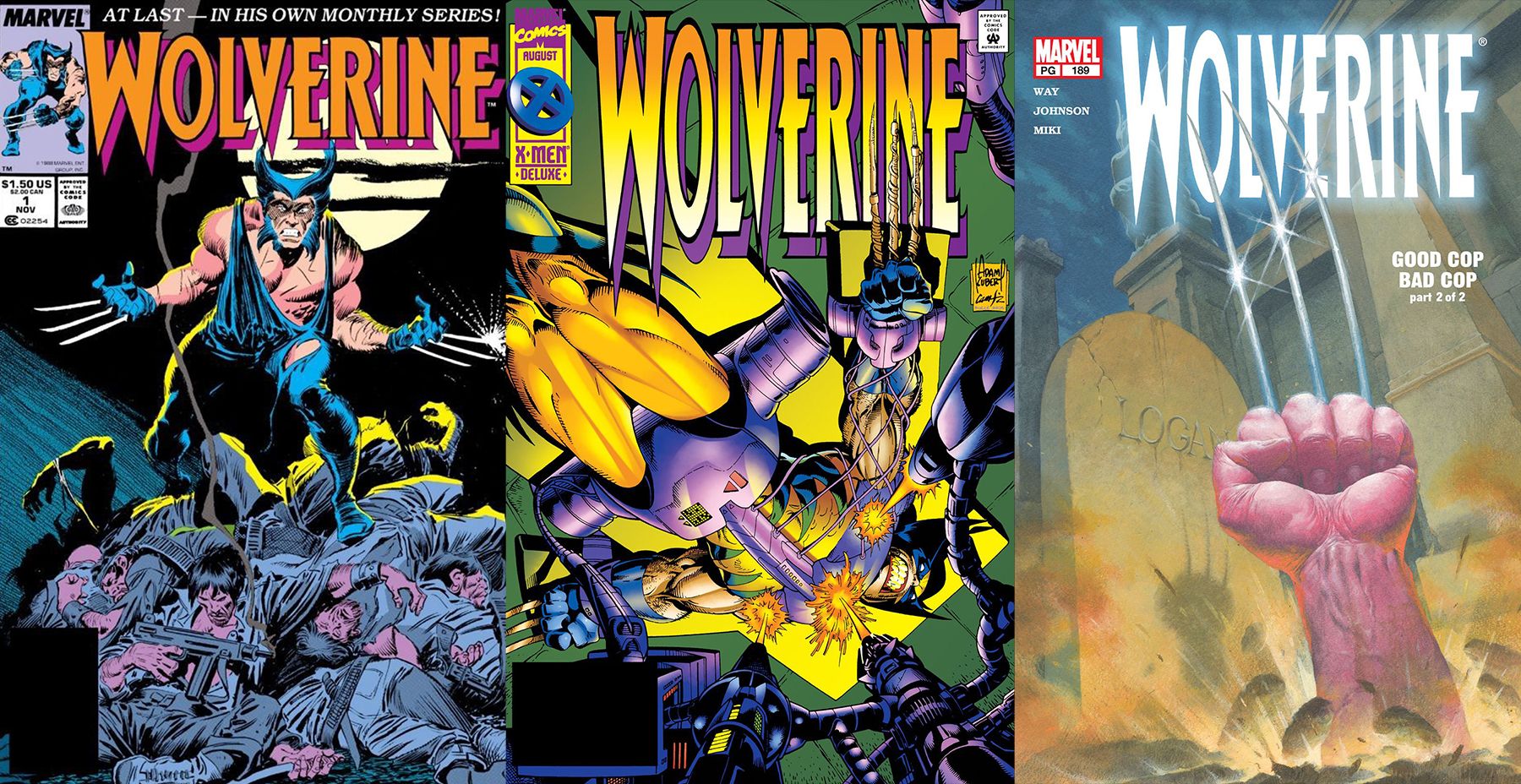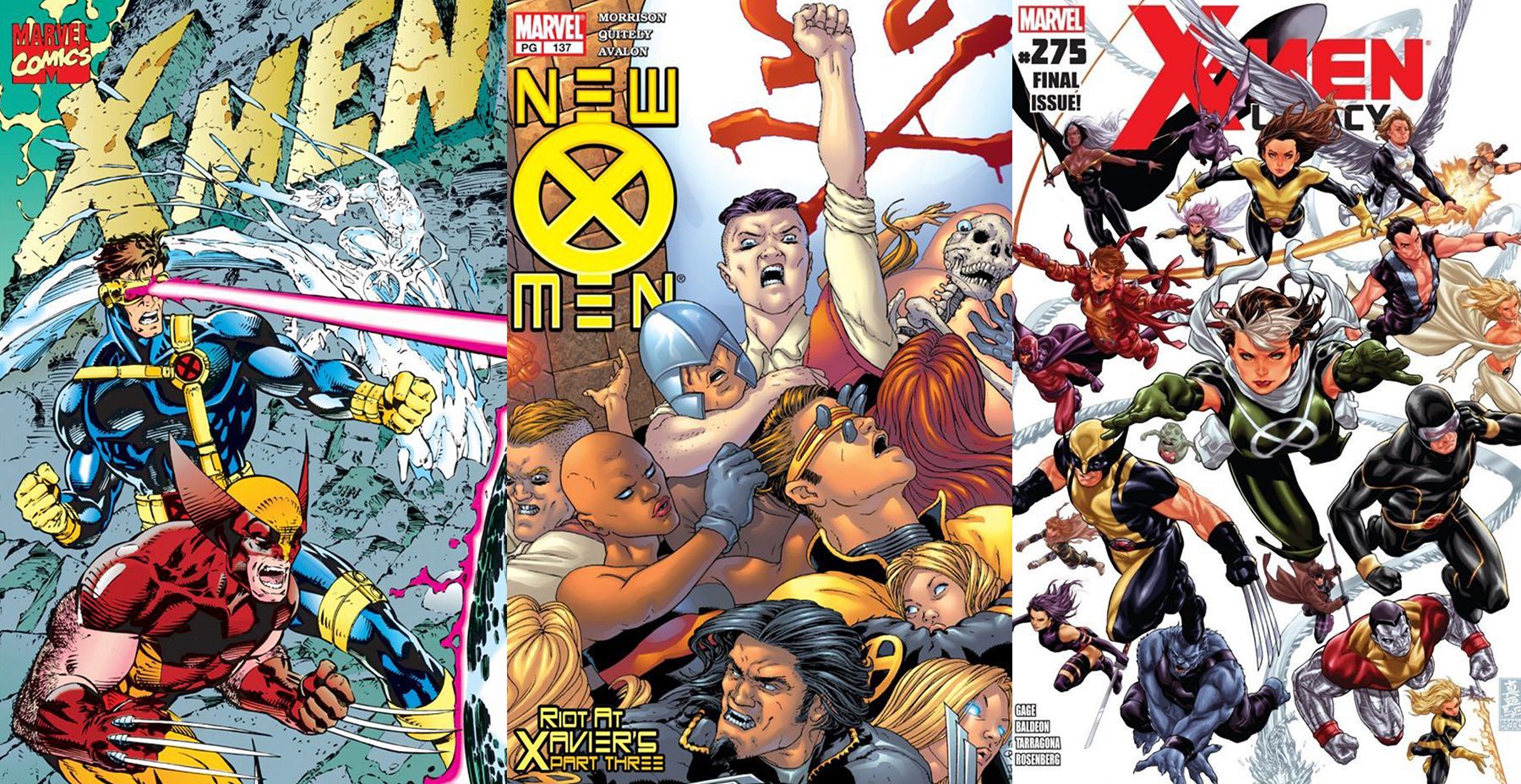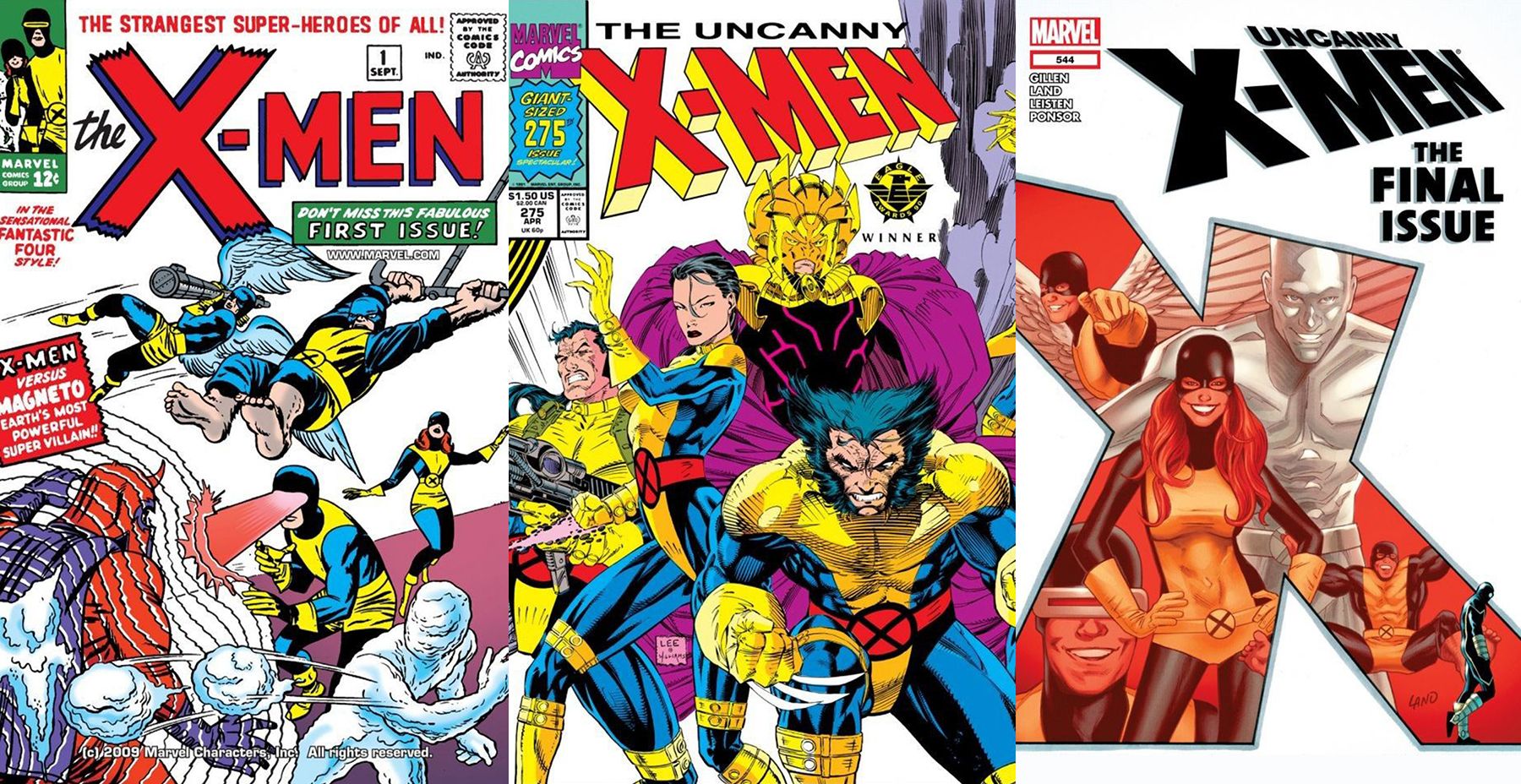The news that "All-New Wolverine" is continuing into the X-Men's upcoming ResurrXion era in spring 2017 may have come as a surprise to readers. Instead of getting an all-new #1 issue for an all-new series, Laura Kinney's latest ongoing will hold on to its numbering. While the rest of the X-Men line releases a half dozen new #1 issues, "All-New Wolverine" will launch a new story arc with issue #19.
RELATED: X-Men: Why Generation X Was THE Mutant Comic Of The '90s
This is a big deal because, well, this rarely happens nowadays. Just look at the rest of the X-Men line; "All-New X-Men" is getting relaunched as "X-Men Blue," and "Extraordinary X-Men" is getting relaunched as "X-Men Gold." This hasn't always been the case. In the past, comics continued their numbering for long stretches of time. The X-Men line in particular has been home to some long-running titles. A quick note: numbering matters the most in this list. For this project, as long as the numbering stays consistent and linear, it counts as one run. If the numbering changed, either with a relaunch at #1 or a return to previous numbering, it breaks the run. So with that in mind, here are the 15 longest-running X-Men titles of all time.
15 Astonishing X-Men vol. 3
- Number of Issues: 68
- Lifespan: July 2004 - December 2013
After two limited series using the "Astonishing" moniker, Marvel finally launched a full-blown ongoing series bearing the name in 2004. The series, written by Joss Whedon with art by John Cassaday, became the line's flagship series. During the Whedon/Cassaday era, the book made a number of big moves: Kitty Pryde returned to the X-Men, Colossus came back from the dead, and the team gained new costumes that would be worn for years to come. The series even introduced new characters like Danger and Ord of Breakworld, additions that would also stick around once Whedon and Cassaday left the book.
Warren Ellis and Simone Bianchi took over the title after Whedon and Cassaday concluded their run, as "Uncanny X-Men" went back to being the headlining series. Still, "Astonishing" had legs well past its initial blockbuster creative team. Writer Marjorie Liu took over the series with issue #48, becoming the first woman to ever serve as the writer of an ongoing X-Men series. Liu gave the team a definitive roster again, including Gambit, Iceman, Karma, Northstar and more. The series closed out in 2013, having run for almost 10 years.
14 Deadpool vol. 1
- Number of Issues: 69
- Lifespan: January 1997 - September 2002
Whether or not you count "Deadpool" as an X-title is a point of debate amongst readers. At the time of Wade Wilson's first ongoing series, though, the Merc with a Mouth was undoubtedly an X-Men supporting player. That first series, which followed two earlier limited series, started Deadpool on the path that would ultimately lead him towards building his own corner of the Marvel Universe.
"Deadpool" started in 1997 with Joe Kelly as writer and Ed McGuinness as artist, as the two of them built up Wade Wilson's world by introducing Blind Al, the Hell House, T-Ray and more. Their run pushed Deadpool well past his limits as he strived to become Earth's savior. Kelly eventually passed the torch to Christopher Priest, Jimmy Palmiotti and Gail Simone as they kept the Merc's first-ever ongoing running longer than anyone ever thought it would. Deadpool's had a few series since this one, too, but his first ongoing remains his longest-running.
13 X-Man
- Number of Issues: 75
- Lifespan: March 1995 - May 2001
"X-Man" had an interesting start, as it launched as part of one of the best-remembered '90s events, the "Age of Apocalypse." For the event, every X-Men title was paused and had a replacement limited series set in this new timeline launched in its place. "X-Man," which replaced "Cable," starred the genetic experiment Nate Grey -- the lab-born combination of the "AoA's" Cyclops and Jean Grey's DNA. When the "Age of Apocalypse" ended, however, "X-Man" continued alongside "Cable" and became its own series.
RELATED: X-ed Out: 15 Forgotten X-Men
"X-Man" #5 brought the "Age of Apocalypse" survivor into the main Marvel Universe, and subsequent issues saw him struggle to adapt to his strange new surroundings. He even came face to face with his "counterpart" Cable, to explosive results. The series also played around with classic X-Men villains like the Hellfire Club and Madelyne Pryor, giving them '90s twists. The series was revamped (but not relaunched) by Warren Ellis in 2000's issue #63, as X-Man became a shirtless mutant shaman. This new take on the character only lasted a year, though, and "X-Man" ended with #75.
12 Generation X
- Number of Issues: 75
- Lifespan: November 1994 - June 2001
As the X-Men are built around the concept of a school for "gifted youngsters," teenage-driven series have been a staple of the line since the very beginning. With its cast of diverse teenagers with attitudes, "Generation X" brought the concept into the '90s. The series launched out of the 1994 "Phalanx Covenant" event as the combined X-teams sought to protect the next generation of mutants from an alien, techno-organic menace. Scott Lobdell and Chris Bachalo created the book's cast and helmed the first few years of the ongoing series, creating new villains (like Emplate) and developing new heroes (like Monet, Husk and Chamber) along the way.
The series continued after Lobdell and Bachalo exited the series in 1997, with creators like Larry Hama, Jay Faerber and Terry Dodson chronicling further semesters for the student body. They gave Monet an interesting backstory, opened up the Massachusetts Academy to humans and gave the team a whole new look. Like "X-Man," "Generation X" was also reimagined by Warren Ellis in 2000. Still, this darker take on the teen team didn't last long. The school shut its doors a year later. After a long wait, a new "Generation X" series is scheduled to launch in 2017 as part of ResurrXion.
11 Wolverine vol. 3/Dark Wolverine
- Number of Issues: 90
- Lifespan: July 2003 - August 2009
If there's one universal truth when it comes to the X-Men, it's this: plenty of fans want to read about Wolverine. Logan waited a decade after his debut to star in his first solo limited series, but since then he's had a pretty impressive streak when it comes to starring in his own comics. Even after his death a few years ago, he still has two comics bearing his name today: "Old Man Logan" and "All-New Wolverine."
Marvel relaunched Wolverine's solo ongoing in 2003 with a creative team of Greg Rucka and Darick Robertson. While this volume of "Wolverine" may not have lasted as long as his first one (spoiler alert: it's still ahead on this list), it did include a number of big deal Wolverine stories. Mark Millar's "Enemy of the State" and "Old Man Logan" both took place during this run, making this a "Wolverine" series you can't ignore.
The title also underwent a name change towards the end of its run when it became "Dark Wolverine." Writers Daniel Way, Marjorie Liu and artist Giuseppe Camuncoli crafted the first solo series for Wolverine's son, Daken, who stole the spotlight from his dad for the final year of this title.
10 Exiles
- Number of Issues: 100
- Lifespan: August 2001 - February 2008
Even though "Exiles" never had the strongest ties to the main X-Men line, that didn't stop it from enjoying a lengthy run. The series served as a vehicle for Blink, a fan-favorite character introduced in the "Age of Apocalypse" event. "Exiles," which featured a team of reality-hopping mutants on a "Quantum Leap"-style mission to right wrongs, gave Blink a home outside of her home dimension. The series also included a version of Morph, giving fans of the character from the '90s "X-Men" animated series and "Age of Apocalypse" more time with that wacky character. During "Exiles'" run, readers also grew close to Nocturne, the alternate-reality daughter of Nightcrawler and Scarlet Witch.
RELATED: X-Tinction Watch: 21 X-Men Missing In Action
The "Exiles" concept proved to be too popular to ignore following "Exiles" #100. The series immediately relaunched with a new #1 and new title -- "New Exiles." Following that series' end with "New Exiles" #18, the team got one more series -- simply titled "Exiles" -- that lasted another six issues.
9 New Mutants
- Number of Issues: 100
- Lifespan: March 1983 - April 1991
"New Mutants" deserves special recognition for being the first official X-Men spinoff book. Yes, "Dazzler" and "Alpha Flight" were launched in the early '80s before "New Mutants," but their ties to the X-line were tenuous at best. "New Mutants" was intended to be the companion book to "Uncanny X-Men," and it served that purpose for years. While "X-Men" starred the team of adult adventurers, "New Mutants" focused on the teenage students of Professor Charles Xavier. Like its parent book, "New Mutants" introduced a number of characters that would become mainstays of the Marvel Universe. Cannonball, Sunspot, Dani Moonstar and Magik all got their start in "New Mutants."
While the series kept its numbering for 100 issues, it wasn't shy about changing up its concept. The students went from being Xavier's students to Magneto's, and later they struck out on their own after an influx of new members (including Boom Boom and Rictor). The team eventually ran into Cable in "New Mutants" #87, thus starting them on the road to becoming X-Force. The "New Mutants" name hasn't gone away, though; the name was used for another school-centric series in 2003 (13 issues), and another one starring the original cast in 2009 (50 issues).
8 Ultimate X-Men
- Number of Issues: 100
- Lifespan: February 2001 - April 2009
When Marvel launched the Ultimate Universe in 2000 with "Ultimate Spider-Man," fans knew it wouldn't be long until they presented fans with a hard reboot of the X-Men. Designed to be a fresh take on the Marvel Universe for the 21st century, complete with modernized origins for Marvel's biggest names, the Ultimate Universe was designed to take big risks. Mark Millar, Adam Kubert and Andy Kubert kicked off their edgier X-Men run with a more militant Magneto, a punk-rock Jean Grey and an even more extreme Wolverine (he had a goatee!).
The series ran for a very long time, as the Ultimate Universe endured mighty floods, horrific acts of super villainy and even threats from alien worlds. The series itself also saw runs from iconic comic writers like Brian K. Vaughan and Robert Kirkman early in their careers. The series finally came to a close with issue #100, but the Ultimate X-Men's story wasn't over yet. Their saga continued into "Ultimate X" (5 issues) and "Ultimate Comics X-Men" (33 issues) before the entire Ultimate Universe was canceled.
7 Cable
- Number of Issues: 107
- Lifespan: May 1993 - September 2002
A time-traveling, gun-toting, tough-talking mutant cyborg with a messiah complex, Cable originally debuted in "New Mutants" and then made an even bigger impact as the leader of "X-Force." After testing the waters with a two-part limited series, Marvel gave Cable his own ongoing series in 1993. The early issues of his first-ever ongoing saw more of Cable's post-apocalyptic origin story told. As the series progressed, writers like Jeph Loeb, James Robinson and Joe Casey would push Cable's powers, origin and personality past their previously established borders. Cable even stopped carrying guns for a while!
Towards the end of its run, writer David Tischman and artist Igor Kordey reimagined the soldier in a more grounded fashion, paving the way for the series' relaunch as "Soldier X" (12 issues) under writer Darko Macan. Cable would later team up with Deadpool for "Cable & Deadpool" (50 issues), and get another ongoing series in 2008 (25 issues). Cable will return to the lead with a new series from James Robinson and Carlos Pacheco starting in spring 2017.
6 Excalibur
- Number of Issues: 125
- Lifespan: October 1988 - October 1998
The third ongoing series launched during the X-Men's '80s expansion, "Excalibur" originally started off as a mash-up series consisting of leftover X-Men (Nightcrawler, Phoenix and Kitty Pryde) and some Marvel UK mainstays (Captain Britain and Meggan). Chris Claremont and Alan Davis' early work on the series delighted fans with its irreverent humor, surprisingly dark turns and numerous jaunts to alternate dimensions. The series was, in a way, "Exiles" before "Exiles" was even created.
With 1993's "Fatal Attractions" crossover, "Excalibur" got pulled deeper into the X-mythos. The series started to feature more crossovers with the main X-Men line, and the series became a destination place for mutants without a series to star in (like Colossus and Wolfsbane). Warren Ellis even turned in some of his first work for Marvel during this era, creating the cranky British secret agent Pete Wisdom for the team. "Excalibur" ended after an impressive 10-year run, and has only returned a few times in the form of a four-issue limited series and a series starring Professor X and Magneto (14 issues). "New Excalibur," which featured a return to the initial "Excalibur" premise, launched in 2006 and ran for 24 issues.
5 X-Force
- Number of Issues: 129
- Lifespan: August 1991 - August 2002
As part of 1991's "Mutant Genesis" (the "ResurrXion" of its day), the X-Line saw sweeping changes made to the casts and creative teams of its books. "X-Force," a new series, introduced Cable's take on Xavier's dream of mutant/human coexistence. Cable's take, not surprisingly, involved proactive missions and lots of punching and pouches.
RELATED: An “X-Force” To Be Reckoned With – Marvel’s Mutant Militia Turns 25
As x-plosive as the first year of "X-Force" was, the series became surprisingly introspective during Fabian Nicieza and Greg Capullo's run as the titular team struggled to define themselves apart from Cable. The series did that again in 1997 when writer John Francis Moore cut the team down to five members, ditched the tights and had the quintet embark on a cross-country road trip. The series returned to its superhero roots soon after that, only to have Warren Ellis' "Counter X" initiative turn the team into an underground band of covert operatives.
The series underwent an even more radical redesign with issue #116, when Peter Milligan and Mike Allred scrapped the entire cast and concept and repopulated the book with original characters. The new "X-Force" was a satirical riff on celebrity culture and introduced Doop, a character that's stuck around. "X-Force" ended with #129, and the new cast was spun off into "X-Statix" (26 issues).
4 X-Factor
- Number of Issues: 149
- Lifespan: February 1986 - September 1998
Okay, this entry is just for one volume of "X-Factor" -- the first one. The second-ever X-Men spinoff, "X-Factor" originally starred the reunited original five X-Men (Cyclops, Jean Grey, Beast, Iceman and Angel). This iteration of the book hit its stride under Louise Simonson and Walter Simonson, the pair most responsible for creating Apocalypse and transforming Angel into the razor-winged Archangel. Years later, as part of 1991's "Mutant Genesis," the team underwent a massive makeover. Peter David and Larry Stroman's "X-Factor" #71 introduced the next iteration of the team, a government-sponsored mutant superhero team. That version of the team, more or less, kept the series going for its second half before concluding with issue #149. The final issue of "X-Factor" also spun off the Havok solo series "Mutant X" (32 issues).
RELATED: 15 Greatest Madrox the Multiple Man Stories
That's not where "X-Factor's" story ends. The series -- this time focused on Multiple Man's mutant detective agency -- came back in 2006. That "X-Factor" lasted for 50 issues which, when added to the previous volumes 149, added up to 199 issues. So another "X-Factor" volume was launched, renumbered #200, and that lasted for 63 issues. "X-Factor" has a lot going on and could have placed higher on this list -- it's just that its run was broken up into three distinct, nonconsecutive numbering phases!
3 Wolverine
- Number of Issues: 189
- Lifespan: November 1988 - June 2003
Following an initial four-issue limited series from Chris Claremont and Frank Miller in 1982, Wolverine got his own ongoing series in 1988. The first solo ongoing series starring an X-Man, took Wolverine to the seedy streets of Madripoor and introduced his alter ego Patch. Following those initial solo adventures in Madripoor, Larry Hama took control of Wolverine's destiny and, along with artist Marc Silvestri, started revealing more and more of Wolverine's origin. They exposed the truth about Weapon X's memory implants and fleshed out characters like SHIVA and Silver Fox. Larry Hama's run on the title lasted most of the '90s, all the way to 1997's "Wolverine" #118.
Following Hama's long run, Warren Ellis and Leinil Yu took over the series as it played host to a rotating roster of high-profile creators. Steve Skroce, Frank Tieri, Sean Chen, Erik Larsen... all contributed to the final years of Wolverine's first-ever and longest-running ongoing series. Of course the end of this series wasn't the end of "Wolverine." His follow-up ongoing also came in at #11 on this list.
2 X-Men vol. 2/New X-Men/X-Men: Legacy
- Number of Issues: 275
- Lifespan: October 1991 - December 2012
This is the run that people often overlook because, well, it's confusing. "X-Men" #1 initially launched in 1991 as part of "Mutant Genesis," and it starred the X-Men's Blue Strike Force. That version of the series lasted for an impressive stretch of time: 113 issues. The series got a radical revamp, but not a new #1, when Grant Morrison and Frank Quitely took it over with "New X-Men" #114.
The "New X-Men" era injected new energy into the X-Men franchise and introduced a number of major characters (Fantomex, the Stepford Cuckoos, Quentin Quire, Xorn). After 40 issues, Morrison wrapped up his X-opus and the series reverted back to being simply titled "X-Men," which featured more traditional rosters of X-Men going on more traditional adventures. Mike Carey reimagined the series' central concept, turning it into more of an anthology-style solo series that focused on one particular X-Character at once.
"X-Men: Legacy" launched with issue #208, continuing the established numbering. This version of the series focused on Professor X as he rebuilt his consciousness following a near-death experience. The book then shifted focus to Rogue, and eventually back to a team of X-Men at the school led by her. The series concluded with issue #275, its numbering having survived more shakeups than any other book on this list.
1 X-Men/Uncanny X-Men
- Number of Issues: 544
- Lifespan: September 1963 - December 2011
The longest running X-Men series of all time is the one that started it all, and it only underwent one name change! The series, a genuine Stan Lee and Jack Kirby creation, launched in 1963 as just "X-Men." It later officially changed its name to "Uncanny X-Men" with 1981's "Uncanny X-Men" #142, even though the series started featuring "Uncanny" on its cover years earlier. This series is also home to the legendary Chris Claremont run, who worked on issues #94 to #279, expanding the origins of Storm, Nightcrawler, Colossus and Wolverine as well as creating Kitty Pryde, Rogue, Dazzler, Gambit, Jubilee, Rachel Grey and a hundred others along the way.
The series continued well after Claremont's first departure (although he'd return for brief runs in 2000 and 2004). Scott Lobdell kept the book at the top of the sales charts in the '90s, Joe Casey made the book edgy alongside Grant Morrison's "New X-Men," and Ed Brubaker took the team from the stars to San Francisco. The series closed out with runs from Matt Fraction and Kieron Gillen, with Gillen penning the last issue.
"Uncanny" returned for a number of follow-up volumes, including one from Gillen (20 issues), another from Brian Michael Bendis (35 issues) and the current one written by Cullen Bunn (15 issues and counting). When it comes to the X-Men, "Uncanny" is the definitive adjective, and this long-lasting title proves why.
Which long-running X-title is your favorite? Let us know in the comments!

